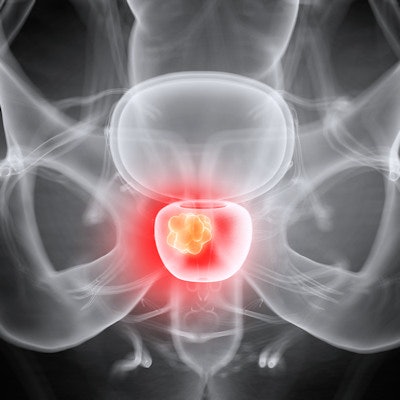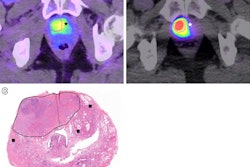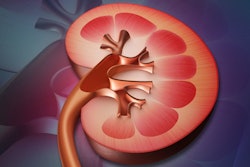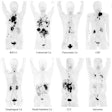
A cost analysis has demonstrated that prostate-specific membrane antigen (PSMA)-PET/CT imaging with F-18 DCFPyL radiotracer should be considered as an alternative to standard imaging for prostate cancer staging, according to a group in New York.
A team led by Dr. Kritika Subramanian of Weill Cornell Medicine in New York City identified average costs for patients undergoing F-18 DCFPyL (Pylarify, Lantheus Medical Imaging) PET/CT versus standard approaches. While more expensive, they found the approach is more effective at finding disease, and therefore less costly over a patient's lifetime.
"It would be important for more centers in the United States to implement this imaging study option without fear of extensive financial toxicity even in areas with unfavorable payer demographics," the group wrote in a study published May 23 in Scientific Reports.
Prostate cancer staging with conventional imaging often includes multiparametric MRI of the prostate, CT of the chest, abdomen, and pelvis, as well as whole-body bone scintigraphy. PSMA-PET/CT with F-18 DCFPyL PET/CT (approved in the U.S. in May 2021) is considered to be superior, however, and it is increasingly being used as the new multidisciplinary standard of care.
Given this, the researchers looked at the costs of F-18 DCFPyL PSMA-PET/CT imaging relative to conventional imaging, as well as to imaging with F-18 fluciclovine, an older radiotracer largely being replaced by F-18 DCFPyL.
The researchers extracted data from 564 prostate cancer patients who underwent PSMA-PET/CT scans between January 2018 and December 2021 at their hospital. Of these, 119 patients (21%) were eligible for research-sponsored scans, while 258 (46%) paid out-of-pocket, and 186 (33%) were able to obtain insurance coverage.
The greatest total cost was associated with F-18 DCFPyL PET/CT imaging at $25,201 per person, followed by F-18 fluciclovine PET/CT imaging at $18,000 per person, and conventional imaging (i.e., CT scan of the chest, abdomen, and pelvis with bone scintigraphy) at $17,176 per person.
The increased costs associated with F-18 DCFPyL PET/CT were attributed to its ability to detect micrometastasis at an earlier stage, the authors noted. This resulted in more aggressive therapy options so that patients gained Quality-Adjusted Life Years (QALYs).
In addition, early disease is not obvious on first attempts using conventional imaging as with PSMA-PET tracers, especially in individuals with low blood levels of prostate-specific antigen, and consequently the true overall costs would be greater for these patients, the group added.
"F-18 DCFPyL PET/CT was associated with a higher QALY than [F-18 fluciclovine] PET, and improved detection of aggressive disease relative to conventional imaging," the group wrote.
The researchers noted that the study was conducted during a very specific time interval and that the landscape is expected to change substantially as alternate radiotracers and adjusted costs become available. Ultimately, imaging tracers are among the very few diagnostic PET tools at the clinician's disposal to improve population prostate cancer control, they wrote.
"The cost-effectiveness analysis demonstrated that F-18 DCFPyL PET/CT should be considered as an alternative to [F-18 fluciclovine] PET/CT and standard of care imaging for prostate cancer staging," the group concluded.





















